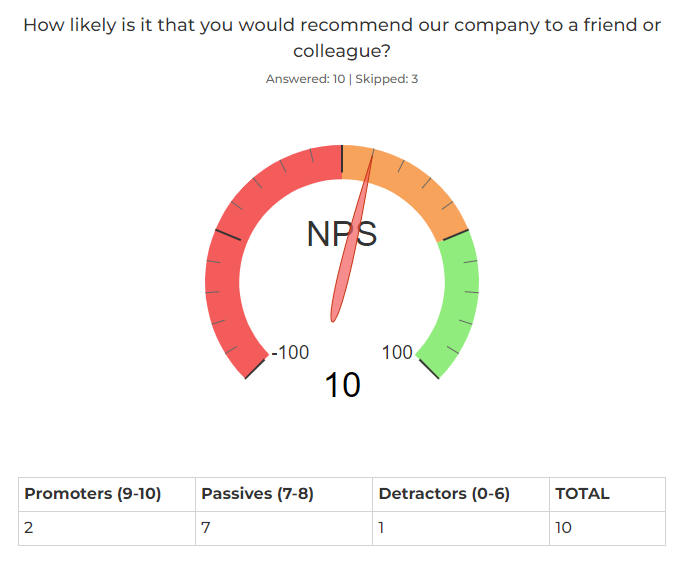NPS is the tried-and-true method for measuring the total customer experience and forecasting business growth. It also presents the survey owner with actionable data for a prompt response if the feedback is strongly negative.

NPS scores are derived from a single survey question:
"How likely is it that you would recommend [variable] to a friend or colleague?"
The respondents are asked to score their answer on a scale from 0-10. Based on their scores, respondents are then grouped as follows:
- Promoters (score 9-10) are extremely loyal and can be expected to continue using your services or products and, just as importantly, refer others to you, generating additional revenue.
- Passives (score 7-8) are satisfied but not highly impressed customers who may or may not return and are prime targets for your competitors.
- Detractors (score 0-6) are dissatisfied customers who can potentially damage your brand and inhibit growth via negative reviews and/or comments on social media
The Net Promoter Score is calculated by subtracting the percentage of "Detractors" from the percentage of "Promoters". The final result can range from a dismal -100 (if every survey respondent is a "Detractor") to an exhilarating +100 (if every survey respondent is a "Promoter"). For example, if 20% of the respondents were "Detractors", 10% were "Passives" and 70% were "Promoters", your NPS would be 70-20 = 50.

Due to its simplicity in capturing customer sentiment, the NPS can be used as a prime customer experience benchmark to involve everyone in your organization. Better yet, the survey owner can now repeat the same survey question on a quarterly, semi-annual or annual basis to learn if there has been any significant improvement, stagnation or continued dissatisfaction.
Note: Net Promoter Score (NPS) is a registered trademark of Fred Reichheld, Bain & Company and Satmetrix.
See also:
Question Types: NPS, Star Rating, Slider, Scale and Ranking
Search for articles:




